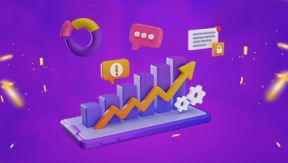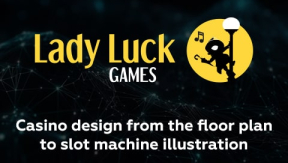
Visual Storytelling by Slot Experts
Have you ever wondered what visual storytelling is? The way in which the modern-day developer is capable of creating captivating and engaging narratives continues to astound casino enthusiasts.
Fewer than two decades ago, we were watching three reels spin and wowed when symbols lined up these seem like an artifact from a bygone era, now. The development of game mechanics means better bonus rounds, more volatility, and most importantly, a heightening in the standards of storytelling.
But how does one define visual storytelling in the sphere of modern iGaming?
We spoke to Phillip Douglas, Chief Product Officer at the Arcadem game developer, who explained why his company places such importance on storytelling, how aesthetics play such an important role, and how its designers approach the storytelling process.
Introduction

How do visual storytelling and slot machine design combine to produce exceptional casino games?
The purpose of combining graphics, images, color, and videos is to drive engagement, captivate the audience, and dictate storylines and emotions. It's quite literally the bedrock of every video game, whether it be a game console, a slot, or any animation movie.
Our expert, Mr. Douglas, believes there is no secret behind the art of great storytelling in slots. He told us:
“As with anything in life, most people will gravitate to something if they find it visually appealing. Nowadays, whether it's video games, movies, art or, in this case, slots, players want to get a sense of excitement about what they're spending money on, and telling a story via in-game graphics allows for a more rewarding game experience.“
The Power of Visual Storytelling
Throughout the ages, visual storytelling has had the power to communicate complex ideas with clarity and simplicity. Whether it be Renaissance Artwork with every rule of thirds maintained, or comic books from the 1920s, it can be used to captivate audiences, inspire change, and foster connections between people.
Combining elements such as images, video, and animation with written or spoken narratives, good storytelling techniques can create a powerful package that speaks directly to viewers.
Indeed, our human brain processes visuals 60,000 times faster than text, according to a study b visualstorytell.com.
How integrated is visual storytelling into our past? What does it tell us about ourselves and how we see the world? What is the length and breadth of stories that can be told? We delve into all that and more below.
Historical Evolution of Visual Storytelling
From Marilyn Monroe to James Dean and Mickey Mouse to Danger Mouse, our cultural makeup has a lot to do with the evolution of visual storytelling over the years.
In the early days of film, stories were told primarily through traditional narratives directors would set up a storyline between a good guy and a bad guy, and induce rising action, before climaxing in a satisfying resolution. Keen moviegoers would recognise the classic Hollywood-style stories tales of heroes triumphing over villains or good overcoming evil. Scriptwriting did a lot of the leg work.
However, in recent decades, film and television have shifted towards a more visual approach to storytelling. Stories were shared via camera angles, lighting, and editing, and not just dialogue. For instance, the shaky camera technique is a great example of how viewers respond contrastingly to other styles the 1999 horror movie Blair Witch Project is a famous exponent of this method.
The use of these techniques enhances the emotionality and impact of a particular scene or moment, amplifying the audience's reaction and engagement with the story.
With the rapid rise of technology in film-making, the visual storytelling landscape moved with it. The advent of special effects software like CGI and motion capture means filmmakers are able to create dazzling visuals to bring stories to life.
Traditional Mediums
The power of traditional visual storytelling is illustrated in full scale in William Shakespeare's Romeo and Juliet. In words, photography, illustration, plays, ballets, operas, films, novels, and any other content medium you can think of, this classic tale has been retold on multiple platforms.
The story follows two star-crossed lovers Romeo Montague and Juliet Capulet who fall in love despite their family's long-standing rivalry and feud. The themes of jealousy, love, and desire are commonly held throughout humankind. Relatable imagery to the human mind has lasted the test of time when it comes to visual storytelling.
Modern Adaptations
From Shakespeare to Metal Gear Solid III, the contrast in the composition may be stark, but similarities remain. There is a difference in the target audience, but readers of fine art and internet gamers share a passion for escapism.
But how do video games and virtual reality spaces use modern-day tools to create compelling content?
Visual storytelling is the process of conveying a story or message through visual elements such as images, videos, and graphics.
A recent study by the Chinese University of Hong Kong showed that 92.7% of the students said animations were helpful in understanding texts and clarifying concepts.
These methods are becoming increasingly sophisticated, allowing players to feel more immersed in the stories they experience. By using visuals such as 3D environments and interactive elements, developers have been able to create amazingly immersive narratives.
A Deep Dive into Slot Machines

There is a consistent balance to strike for developers of casino games between devising a visually appealing product and one that meets the excitement threshold for online casino customers.
As part of the development process, game creators will gather information through market research and data to see which slot mechanics are preferable among players, how well certain designs perform against others, and look at ways in which they can beat off the competition to land prime real estate on an online casino's roster of slots.
Core Elements of Slot Machines
The core elements of a slot machine include a grid with rows and reels that spin to reveal symbols, paylines to determine winning combinations, and a random number generator (RNG) to decide the outcome.
While every slot features each of the above elements, all of them are different. Whether it be illustrations, icons, infographics, or layout, a designer will carefully study ways in which to make their product stand out and implement them accordingly.
Understanding Slot Aesthetics
It's widely understood that the use of bright colours, texture options, shapes, gradients, and other design elements can help create a more immersive gaming experience for players.
But why is it important for developers to stick to the underlying principles of the game instead of thinking too far ahead?
Our guest expert, Mr. Douglas, believes all providers need to be simple first and foremost:
"For me, you have to get the basics right first and then, with this foundation, you can start to build upon it and start adding all the bells and whistles. The game has to graphically make sense when a player looks at it, ie a wild is a wild, scatter is a scatter and the UI is easy to understand."
Mr. Douglas believes strong foundations allow developers to get more creative down the line, as evidenced by the success of his company's games:
"Once you have these basics, you can start upgrading the game visually. One example for Arcadem would be that we recently started adding animated big win screens to our games, such as 'Ace Danger: License to Kill', where the player celebrates their big win with the narrative image of Ace lighting a cigarette to create a smoke cloud through which he shoots his enemies."
The Art of Visual Storytelling in Slot Machines
There is a specific skill for visual storytelling in slot machines, and if a developer can get it right, it makes for a powerful tool that can help create an engaging and memorable gaming experience.
Whether it’s subtle visual cues or big cinematic moments, a clever extrapolation of all the elements can add a lot of depth and excitement to slot gaming. With the right combination of visuals and sound, gaming developers won't only create a standalone concept but also lay the groundwork for sequels, which in turn creates phenomenal brand awareness for the provider.
The Interplay of Visual Elements
On their own, slot elements can look great, but the best slots manage to knit them together individually and seamlessly. Visual cues, like symbols, animations, colours, and images can all contribute to creating an immersive experience while telling a story.
Symbols are often used to represent different characters or items within the game's story, while animations bring them to life.
Colour schemes often reflect the tone and atmosphere of the game, helping to create an emotional connection between the player and the storyline.
Photos can also help to convey a mood or message, like a beach scene for a tropical-themed slot machine, while other elements such as typography, symmetry of design, and a comprehensive understanding of how whitespace and negative space work, can help game developers make a name for themselves in a crowded field.
By creating an engaging environment through visual elements, slot machines are able to tell compelling stories that draw players in and encourage them to keep playing.
Successful Examples of Visual Storytelling
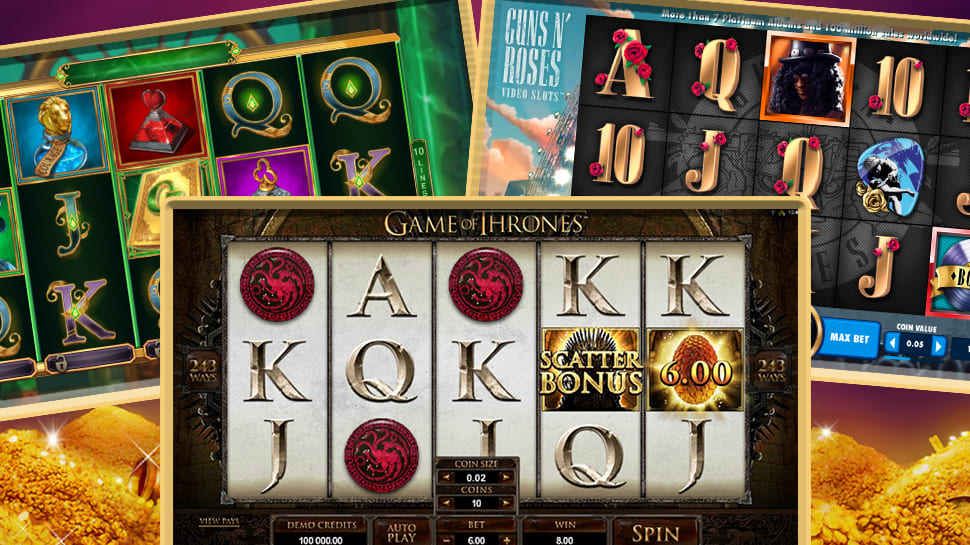
There are so many slots that employ successful storytelling techniques, it's hard to pick the best. However, one common theme among our three choices is the existing storyline already in place. It just goes to show the importance of building a world around any
- Book of Oz: This popular slot machine features imagery from the classic 1939 film, transporting players to the enchanted land of Oz. It has eye-catching visuals and animations that tell the story of the yellow brick road and all its quirks. Players can trigger special bonuses, including an expanding symbol bonus round.
- Guns N’ Roses: This slot machine game features iconic imagery from the legendary rock band Guns N’ Roses. It offers plenty of bonus rounds with vibrant visuals and animations. Players can look forward to bonus rounds like “Sweet Child O’ Mine,” “Welcome to the Jungle,” “Paradise City,” and more. The game also features clips from classic music videos, making it an extra special treat for fans of the band.
- Game of Thrones: This slot machine game brings to life the characters and storylines from the hit TV series Game of Thrones. The visuals are somewhat basic, but the Westeros-themed background means the hit TV show comes to life thanks to strong storyline elements. As players progress through the game, they experience the extra features which bring additional excitement to the gaming process.
Techniques of Integrating Storytelling in Slot Design
As we alluded to above, a great way to integrate storytelling into a slot's design is by creating or sticking to, a theme tying all of the symbols and features together. This could be based on an existing story, such as a popular movie or book, or it can be set in its own world with unique characters and settings.
A good slot should have a strong narrative arc throughout, building up suspense and excitement along the way. This can be achieved through special bonus rounds where players are given additional tasks or rewards, or through interactive elements like mini-games that allow players to explore different aspects of the game's world.
Animations, sound effects, and artwork should also help to create a more immersive experience by further bringing the game's theme to life.
Visual Hierarchy and Colour Theory
Visual hierarchy is defined as arranging elements to show their order of importance and helping direct the player’s attention to the game's most important characteristics.
Meanwhile, colour theory involves understanding how colours interact with one another, how they are perceived by viewers, and what emotions different hues evoke.
Character and Symbol Design
The design of symbols, or leading game characters, and their significance in contributing to a narrative, is incredibly important. Symbols or characters represent ideas, experiences, emotions, and even stories that can be associated with the game.
For example, a slot machine featuring cherries, sevens, and bells is likely to evoke the image of a classic-style slot.
Similarly, an adventure-themed slot game may feature symbols representing different elements of the story, such as characters and locales. The interaction of these symbols, along with sound effects, animations and other features contribute to the overall narrative experience for players.
Challenges in Incorporating Visual Storytelling
-
1
Capturing the right tone
Visual storytelling requires finding a balance between maintaining the integrity of the story and catering to the interests and expectations of the player. -
2
Combining narration with visuals
It is important to ensure that both the narration and visuals work together to create a cohesive story. The right combination of visuals, sound effects, voiceovers and text can help bring the story to life, but it should not overpower the excitement of gambling on a slot game. -
3
Adapting story elements for an interactive experience
Video slots are inherently interactive, which means that the story elements must be adapted to work in this format. This can be a challenge as it requires finding ways to keep players engaged and motivate them to continue playing without compromising the integrity of the narrative.
The Future of Visual Storytelling in Slot Design
There are two new and exciting storytelling frontiers on the horizon for game providers to explore Virtual Reality and Augmented Reality. Work is already underway to produce slots capable of integrating both new types of technology, which will create more realistic and immersive gaming experiences and potentially new in-game features.
For example, some slots allow players to access a 3D environment while they’re playing, adding another dimension to their gameplay experience. With VR/AR technology, the industry can create games that take players to new and exciting places.
Developers are taking advantage of advancements in hardware such as faster processors and better graphics cards to create visually stunning 3D worlds for players to explore while they spin the reels.
Expert Insights
In the world of modern slot games, visual storytelling plays a vital role in captivating players and enhancing their gaming experience. Insights from our Slotsjudge experts shed light on the intricate art of creating compelling narratives through visual elements in slots.
How they do it in Arcadem
We asked Mr. Douglas to share his insights on the role and the importance of visual storytelling in slot design. This is what he had to say:
"With any slot game, the skeleton will always be the mechanics of the game and when you add music, graphics and a story on top, it gives the player a gamified experience and allows them to become more invested with every spin.
Moreover, as the next generation of players is accustomed to more visual graphics in their daily lives, you need to attract their attention with stellar graphics and, in some cases, the story is only a support actor to this, since it's best to give the player the option to see the story if they wish. But you have to always offer excellent mechanics, sound, and visuals no matter what.
Characters are crucial to tying the slot game and story together when composing a story for the players. Our graphics play a huge role in bringing the story to life and enhancing the players' game experience, whether it's original characters such as Ace Danger, a cheesy American spy, or a dark Alice from Alice in Wonderland."
Below are some great examples of characters in Arcadem slots, which serve to contribute to compelling storylines, as referenced by Mr. Douglas' assessment.
Each of these characters features prominently in one or several Arcadem games, with the developer aiming to stick to a storytelling strand throughout its creative process.
Ace
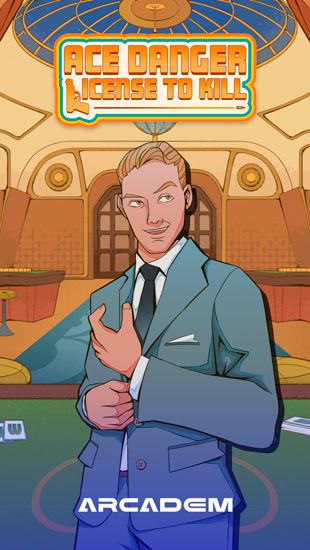
Ace is a daredevil detective working with his mentor Larry Kowalski to hunt down the bad guys, including the infamous Wolf.
Alice
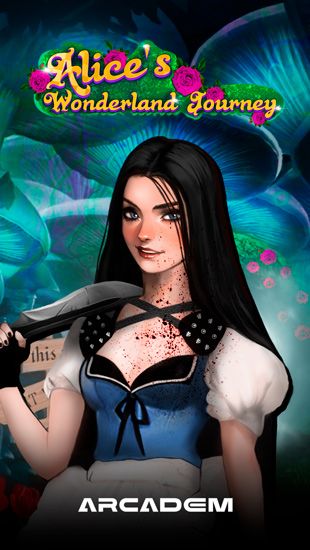
After Mad Hatter's Tea Party, Alice continues her Wonderland journey. Alice is prepared to fight any challenge that comes her way.
Shakespeare
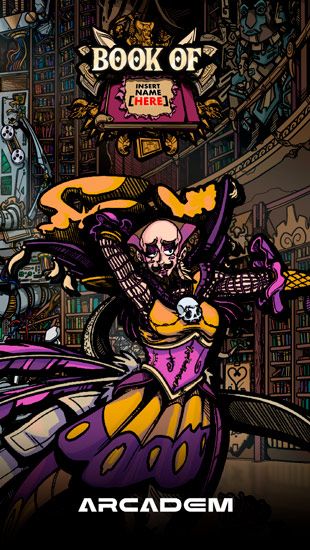
Everyone believes that William was born and died on the same day, but he was actually transported to the library, where all the stories in the universe are housed.
Mary Shelley
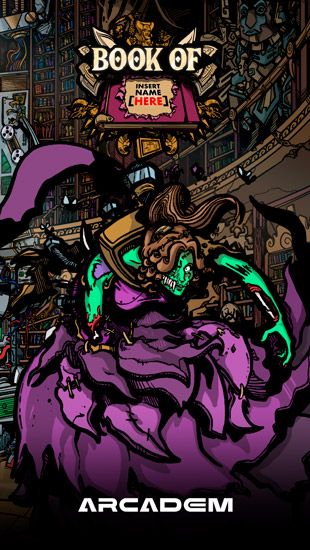
Once Mary arrived at the library, she got so fed up with people not knowing she was the author of Frankenstein's Monster, she turned into a monster herself. Now she stalks the halls looking for the newest victims.
Best Practices and Key Lessons
How do you find the golden ratio when it comes to visual storytelling in slots? Is a rigid plan the way forward? Should there be pragmatism? Or is a fluidity of thought the answer?
Mr. Douglas believes the ability to learn on the job is a critical facet, and that he and his staff at Arcadem don't follow charts, graphs, and maps to guide their decisions:
"Our best practices are never set in stone, as you always have to try to evolve and not rest on your previous works. The best example I can give of this is every game we release, as the graphics, gameplay, mechanics and sound always improve as we take the lessons from every project and bring them forward to the next game.
The recent implementation of our animated big win screens that tell a story and give the player a sense of being in that 'big win moment' is something that has come from this process and we will continue to evolve and perfect this with every game moving forward."
Final thoughts
What is the future of visual storytelling in the slot sphere? Editor-in-chief of Slotsjudge, Aleksandra Andrishak, believes advancements in technology combined with improving storytelling techniques mean the standard of games is only getting better.
She said: "The casino gaming industry is in a state of continual evolution and advancement. As technology progresses, casino game developers can create more immersive experiences than ever before. Virtual Reality (VR) and Augmented Reality (AR) technologies provide opportunities for game developers to push the boundaries of storytelling in slot games, and we are already starting to see results.
In a VR slot game, for example, we anticipate games in the near future where players can be transported to an entirely different world with beautiful graphics and soundscapes that would otherwise be impossible through traditional means of storytelling. The visuals in these games are incredibly detailed and realistic, thanks to the power of VR technology.
Furthermore, AR allows players to interact with elements of the environment in real-time, further enhancing the gaming experience.
In addition to enhanced visuals and soundscapes, VR and AR also allow for more interactive gameplay. Players can use their motion controllers to interact with characters and objects in the virtual world, creating a unique and engaging experience that traditional slot games cannot provide.
It feels as though we are on the cusp of an exciting moment in slot development we can't wait to watch it unfold."
FAQ
-
What is visual storytelling?
-
Visual storytelling is the process of communicating a story through visual elements such as graphics, illustrations, images, and videos.
-
How to learn visual storytelling?
-
Visual storytelling can be learned by studying the principles of composition, colour theory, and visual hierarchy. But, much like everything in life, practice is key to mastering the art.
-
How important is visual storytelling for slot games?
-
The better the visual storytelling, the more likely a game is to evoke a particular atmosphere and emotion, which encourages players to become more engaged with the content.
Other Articles You May Be Interested In


